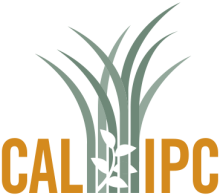Climate Matching Map
| Attachment | Size |
|---|---|
| climatematch-cordyline_australis-california-20251031.pdf (1.14 MB) | 1.14 MB |
1. Question 1
USDA GRIN does not list any naturalized areas as of this evaluation.
2. Question 2
Some of the occurrences in southeast Australia and Tasmania are in areas that match the climate of the region of interest, as well as a few noted occurences in Sicily, Spain and France. (GBIF).
3. Question 3
4. Question 4
The populations in California as yet have not been described as invasive, though there are ~53 observations currently listed, with many listing many naturalized plants. (Calflora)
"Habitat types invaded as noted in Redwood National Park suggest that disturbance may facilitate germination and growth, but my observations suggest that disturbance post-digestion is not necessary for germination." Cal-IPC PAF summary of Personal Communication from Andrea Williams
5. Question 5
Cordyline fructosa is fairly pan-tropical but is considered introduced to Hawaii, which is not a similar climate to the area of interest. (CABI)
6. Question 6
South America, inland-South Africa, England, Scotland, Northern Europe, Hawaii, coastal southeastern Australia and eastern Tasmania. (GBIF)
The following areas match the climate:
California (coastal) USA, southern Europe and the Mediterranean, occurrences on the South Island of New Zealand, and southeast Australia (some) and western Tasmania. (GBIF)
7. Question 7
Observations do not indicate any major alteration of community composition, but potential to add a new layer (sub-canopy) in small stands, or to alter riparian zone composition. (Williams)
8. Question 8
The species is adapted to fire and can resprout from a rhizome. It is listed as Moderately flammable ("Most of these species produce heavy accumulations of flammable litter and elevated dead material, and/or have flammable green foliage. Not recommended for green breaks or for planting in defensible space") (McMahon & Pearce 2005; this information was also found in various brochures)
No evidence that the species promotes fire and transforms the plant community.
9. Question 9
10. Question 10
11. Question 11
12. Question 12
13. Question 13
14. Question 14
Jepson has an unabridged note on the species indicating that the population in Sonoma, California had not yet been observed to have flowered. (Jepson)
The plant seems to have 3- many stems that contain infloresences in photographs. (USDA Plants: photos)
15. Question 15
16. Question 16
17. Question 17
18. Question 18
19. Question 19
20. Question 20
Evaluation Notes
New climate match map linked and attached 10/31/202205 (not proofed for accuracy with climate match questions answered previously). - JBurger




